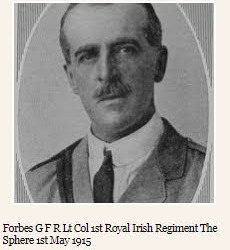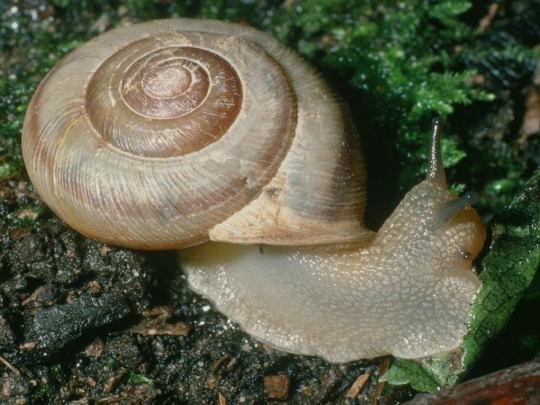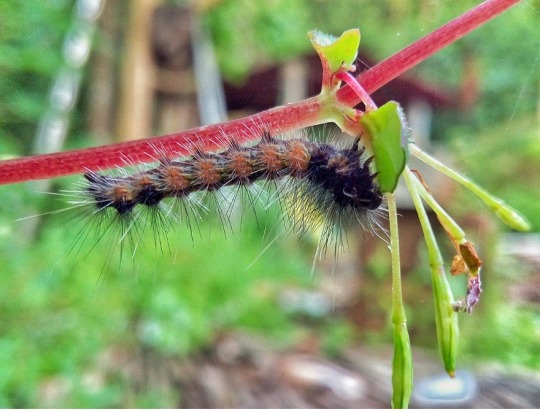#D.L. & Co.
Explore tagged Tumblr posts
Text
How Common is Neurodivergence?

[image id: poster of "How Common is Neurodivergence?.” There are 12 circles and five small images: an image of a brain, speech bubbles, an infinity sign, a person reading, and a person surrounded by arrows and balls. Each of the 12 circles has a percentage representing how common a particular form of neurodivergence is written in Open Dyslexic font. Full transcript, more information, and references under the cut.]
More Information
Forms of neurodivergence represented here are focused on neurodevelopmental disorders.
These percentages are representative of percentage in general population and do not reflect percentages within neurotypes which are often higher due to co-occurrence being the norm, rather than the exception, within neurodevelopmental disorders; for example, 33-45% of people with ADHD will also have dyslexia (Butterworth & Kovas, 2013), whereas only 10% of the general population are dyslexic (British Dyslexia Association [BDA], 2023).
Certain neurodivergencies are often underrepresented and under-reported, so the percentages are likely to be higher; for example, one study suggests that rates for FASD in the UK may be as high as 17% (McQuire et al., 2019).
Some of the neurodivergencies represented here are umbrella terms and percentages given are representative of all forms of neurodiversity belonging to that term; for example, SpLds include dyslexia which is at a rate of 10% (BDA, 2023) and dyscalculia which is at 3-7% (Haberstroh & Schulte-Körne., 2019). Tic Disorders at 1% are another example here, as this is inclusive of Tourette Syndrome which is at 0.6%, and around 1 in 5 individuals exhibit tics at some point during childhood (Cavanna et al., 2017).
______________
Transcript in Full
1% Intellectual Disability
10% Language Disorder
4% Speech Sound Disorder
5% Stuttering
7.5% Social (Pragmatic) Communication Disorder
1.7% Autism
5% ADHD
10% Specific Learning Disorder (SpLD)
5% Developmental Co-Ordination Disorder (DCD)
3-4% Stereotypic Movement Disorder
1% Tic Disorders
3.6% Fetal Alcohol Spectrum Disorders (FASD)
______________
Sources
American Psychiatric Association. (2022). Diagnostic and Statistical Manual of Mental Disorders (5th Ed., Text Rev.).
Arvidsson, O., Gillberg, C., Lichtenstein, P., & Lundström, S. (2018). Secular changes in the symptom level of clinically diagnosed autism. Journal of Child Psychology and Psychiatry, 59(7), 744–751.
Attention-deficit/hyperactivity disorder (ADHD). PsychDB. (2022, November 29).
Autism spectrum disorder (ASD). PsychDB. (2022, May 19).
Butterworth, B., & Kovas, Y. (2013). Understanding neurocognitive developmental disorders can improve education for all. Science, 340(6130), 300–305.
Cavanna, A. E., Coffman, K.A., Cowley, H., Fahn, S., Franklin, M. E., Gilbert, D.L., Hershey, T.G., Jankovic, J., Jones, M., Leckman, J.F., Lehman, R., Mathews, C.A., Malaty, I., McNaught, K., Mink, J.W., Okun, M.S., Rowe, J.A., Scahill, L.D., Scharf, J.M., Schlaggar, B.L., Stewart, E., Walkup, J.T., Woods, D.W.. (2017). The spectrum of Tourette Syndrome and TIC disorders: A consensus by Scientific Advisors of the Tourette Association of America. Tourette Association of America.
British Dyslexia Association. (2023). Dyslexia. British Dyslexia Association.
Dyspraxia at a glance. Dyspraxia Foundation. (2023).
Haberstroh, S., & Schulte-Körne, G. (2019). The Diagnosis and Treatment of Dyscalculia. Deutsches Arzteblatt International, 116(7), 107–114.
Ketelaars, M. P., Cuperus, J. M., van Daal, J., Jansonius, K., & Verhoeven, L. (2009). Screening for pragmatic language impairment: The potential of the Children’s Communication Checklist. Research in Developmental Disabilities, 30(5), 952–960.
May, P. A., Baete, A., Russo, J., Elliott, A. J., Blankenship, J., Kalberg, W. O., Buckley, D., Brooks, M., Hasken, J., Abdul-Rahman, O., Adam, M. P., Robinson, L. K., Manning, M., & Hoyme, H. E. (2014). Prevalence and characteristics of fetal alcohol spectrum disorders. Pediatrics, 134(5), 855–866.
McQuire, C., Mukherjee, R., Hurt, L., Higgins, A., Greene, G., Farewell, D., Kemp, A., & Paranjothy, S. (2019). Screening prevalence of fetal alcohol spectrum disorders in a region of the United Kingdom: A population-based birth-cohort study. Preventive Medicine, 118, 344–351.
Norbury, C. F., Gooch, D., Wray, C., Baird, G., Charman, T., Simonoff, E., Vamvakas, G., & Pickles, A. (2016). The impact of nonverbal ability on prevalence and clinical presentation of language disorder: Evidence from a population study. Journal of Child Psychology and Psychiatry, 57(11), 1247–1257.
Polanczyk, G. V., Willcutt, E. G., Salum, G. A., Kieling, C., & Rohde, L. A. (2014). ADHD prevalence estimates across three decades: an updated systematic review and meta-regression analysis. International Journal of Epidemiology, 43(2), 434–442.
Polanczyk, G., de Lima, M. S., Horta, B. L., Biederman, J., & Rohde, L. A. (2007). The worldwide prevalence of ADHD: A systematic review and metaregression analysis. American Journal of Psychiatry, 164(6), 942–948.
Prevalence and Therapy Rates for Stuttering, Cluttering, and Developmental Disorders of Speech and Language: Evaluation of German Health Insurance Data. (2021). Frontiers in Human Neuroscience, 15(645292), 1–13.
Social (pragmatic) communication disorder. PsychDB. (2021, March 29).
Stereotypic movement disorder. United Brain Association. (2022, August 8).
Wren, Y., Miller, L. L., Peters, T. J., Emond, A., & Roulstone, S. (2016). Prevalence and predictors of persistent speech sound disorder at eight years old: Findings from a population cohort study. Journal of Speech, Language, and Hearing Research, 59(4), 647–673.
UCL. (2013, April 19). Learning disabilities affect up to 10 per cent of children. UCL News.
#neurodiversity#neurodiverse stuff#neurodivergent#neurodivergence#actually autistic#actually audhd#autism#audhd#adhd#dyspraxia#disability#disabilties#neurodevelopmental#intellectual disability#communication disorder#stuttering#asd#motor disorders#dcd#actually dyspraxic#dyspraxic#tics#tourettes#splds#dyslexia#dyscalculia#dysgraphia#fasd
364 notes
·
View notes
Text
One study by researcher Jorge Cuartas and his co-authors found that spanking undermines feelings of safety, and promotes hypervigilance. They found that children who were spanked were more attuned to potential threats, and which even included neutral faces. In other words, these children were more likely to be constantly monitoring the facial expressions of others, feeling on edge, and easily thrown into dysregulation if someone else seemed unhappy — even if it was simply the absence of a happy facial expression. One of the authors of the study compared it to the impact of sexual abuse, showing a change in how the brain processes the world, undermining and eroding a sense of safety: ‘You see the same reactions in the brain…Those consequences potentially affect the brain in areas often engaged in emotional regulation and threat detection, so that children can respond quickly to threats in the environment.’
D.L. Mayfield and Krispin Mayfield, STRONGWILLED, Chapter 10: “Spare the Rod, Spoil the Child”
#quotes#d.l. mayfield#krispin mayfield#strongwilled#jorge cuartas#corporal punishment#children#parenting#hypervigilance#trauma#emotional regulation#child abuse
7 notes
·
View notes
Text
a fluffy dramione story told through newspaper articles
Part 1
this is Part 2
BRITISH WIZARD "PRINCE" TO GET DIVORCED
Draco Malfoy separates from wife of six-years, Astoria Greengrass
London. (2007) . The new year isn't off to a good start for Draco Mafoy, head of Malfoy Foundation, inherited member of the wizengamot and SpAd on dark magic artefacts. According to Malfoy’s lawyer and former classmate Theodore W. Nott, "Astoria and Draco Malfoy decided to end their marriage but remain united in raising their son, Scorpius, in an amicable co-parenting situation. Astoria will continue to work for the Malfoy Foundation. No further details will be given".
For some lonely witches (or wizards) this might be good news, as Mr Malfoy is widely considered to be one of the richest wizards of the country. Prior to his marriage he topped the most-eligible-bachelor list and it has been rumored that the song “My grey-eyed lonely Prince”, by Patty Swift, was written about him.
Statement from Theodore W. Nott, Attorney at Wizarding Law, Spokesperson for the Malfoy Foundation
February 14, 2007
“On behalf of my client, Mr. D.L. Malfoy, I am urging the magic media to stop spreading rumors of a romantic relationship between Mr. D.L. Malfoy and Mr. H. J. Potter. They are neither in a relationship nor are they raising Ted Lupin together. Mr. Malfoy does not care about the gay part, but is hurt that nobody seems to think he could do better than Potter”.
11 notes
·
View notes
Text


17th March 1915 - Western Front. George Francis Reginald Forbes was a grandson of the 6th Earl of Granard of Castle Forbes, Co. Longford, and was a descendant of the first Colonel of the Regiment. He was born in the Curragh, Co. Kildare on 6th September 1866, the son of Colonel the Honourable William Francis Forbes D.L. and Phyllis Rowe.
Forbes was gazetted 2nd Lieutenant in the Royal Irish Regiment from the Militia on 6th July 1889. He was promoted Lieutenant, 25th March 1891; Captain, 30th January 1895; Major, 7th September 1904 and Lieutenant Colonel, commanding 1st Battalion Royal Irish Regiment on 12th March 1912.
Forbes served through the Tirah Campaign, 1897-8, including operations on the Samana, and received the India General Service Medal. He was adjutant of the Bombay-Baroda Railway Volunteers, 17th May, 1899 to 16th May 1904, and Staff Captain, No 12 (South Down) District 1st June 1905 to 31st May 1909.
George Forbes married Agnes Margaret Crum on 4th August 1904 at Windsor. The couple lived at Fyefield Manor, Abingdon, Berkshire, and had a son Walter Arthur Hastings Forbes, born 18th December 1905.
Forbes was wounded at St. Eloi on 15th March and died two days later in the Casualty Clearing Station in Bailleul.
Information and headstone photo
http://www.longfordatwar.ie/soldiers/157
#18thfoot #royalirishregiment #greatwar #worldwar1 #ww1 #westernfront #steloi
0 notes
Text
📕 Appalti PNRR: si applica il nuovo Codice Appalti
📚 Qual è la normativa di riferimento per le procedure avviate dal 1° luglio 2023?
👨⚖️ Lo chiarisce il TAR in un’interessante sentenza
0 notes
Text
Smorgasbord Book Promotions - Book Review - In the Tree's Shadow: A collection of stories that exist in your dreams… and nightmares by D.L. Finn
Delighted to share my review for the latest release by D.L. Finn – In the Tree’s Shadow: A collection of stories that exist in your dreams… and nightmares. About the collection A collection of short stories where dreams and nightmares co-exist. Nestled inside these pages, you’ll meet a couple in their golden years who take a trip with an unexpected detour, a boy desperate to give his brother…

View On WordPress
0 notes
Photo

Some of Our Contestants Will Receive:
“A travel alarm clock and a bicentennial salute to America 1776! An incredibly crunchy peanut butter bar with all the goodness you’ve come to expect from the makers of the Clark bar!”
(Found in a 1976 episode of Match Game.)
#1976#candy#clark peanut butter logs#d.l. clark co (pittsburgh pa)#game shows#match game#prizes#some of our contestants will receive#tv#yt screencap
1 note
·
View note
Photo

black by insomnniaa featuring black home decor
#polyvore#fashion#style#Current/Elliott#Cami NYC#La Perla#Isabel Marant#Yves Saint Laurent#Oscar de la Renta#Vanessa Mooney#Gucci#Byredo#Mason Pearson#NARS Cosmetics#Diptyque#D.L. & Co.#clothing
11 notes
·
View notes
Photo

nude template by roxariaone featuring a burberry perfume ❤ liked on Polyvore
Jason Wu cut out dress, 2,350 BAM / La Perla nylon panty, 125 BAM / GUESS peep-toe boots, 155 BAM / Prada sunglasses, 620 BAM / Eyeshadow, 40 BAM / Burberry perfume, 245 BAM / D L Co small item storage, 135 BAM
#polyvore#fashion#style#Jason Wu#La Perla#GUESS#Prada#Burberry#D.L. & Co.#Nicole#Who What Wear#clothing
1 note
·
View note
Photo

can't hardly stand by velvet-ears featuring black home decor ❤ liked on Polyvore
Cheap Monday t shirt / Nanushka tapered trousers / Off white, $545 / Vans black slip on sneaker, $63 / Yves Saint Laurent leather chain wallet, $1,340 / Art deco jewelry, $27 / Gypsy 14k ring / Heart shaped ring / Incase iphone case, $21 / H M mini claw hair clip, $2.66 / INIKA mineral mascara, $25 / Nars cosmetic, $41 / Make eye make up / NARS Cosmetics smudge proof eyeliner, $25 / NARS Cosmetics nail polish / D L Co black home decor
#polyvore#fashion#style#Cheap Monday#Nanushka#Off-White#Vans#Yves Saint Laurent#Gypsy#Incase#H&M#INIKA#NARS Cosmetics#Make#D.L. & Co.#clothing
12 notes
·
View notes
Photo

midnight by vasilikh featuring green candles
#polyvore#fashion#style#Alexis#Sies Marjan#River Island#H&M#Gucci#Jennifer Creel#Ray-Ban#Charlotte Tilbury#Guerlain#Dolce&Gabbana#e.l.f.#D.L. & Co.#clothing
1 note
·
View note
Photo

SHEIN Ruffle Trim Overlap Hem Striped Bardot Dress by fashiondiary5 featuring a flower candle
Long sleeve short dress / Long sleeve short dress / Block-heel sandals / Man bag / Face makeup / Estée Lauder estee lauder mascara / Perfume fragrance, $46 / Pink throw pillow / D L Co flower candle / ETIVAL Blanc, $1.86
1 note
·
View note
Photo

💙🧡💛💗♥👑💙💗🥄👑🖤🥄👑💎💀🕯️
#candles#skullcandle#skulls#dl&co#D.L & CO.#D.L & CO. Memento Mori#mementomori#gothic#spooky#eerie#scary#creepy#macabre#horror#cityofangels#City Of Angels The Distillery District Toronto#thedistillerydistrict#toronto#mypost#myupload#mypicture#mypictures#picture#pictures
3 notes
·
View notes
Photo

Grey by mooonfruit featuring skull head home decor ❤ liked on Polyvore
Alexander Wang turtle neck crop top / Topshop boyfriend fit jeans / Eres padded lingerie, $290 / Dr. Martens black heeled booties / Pu leather purse / Kendra Scott 14 karat ring / Little Barn Apothecary haircare / D L Co skull head home decor, $12 / McCoy Design handmade home decor / Nikon 10.2MP Digital SLR Camera with 18-55mm VR Lens - Black (D3000) :... / The Criterion Collection
#polyvore#fashion#style#Alexander Wang#Topshop#Eres#Dr. Martens#Kendra Scott#Little Barn Apothecary#D.L. & Co.#McCoy Design#Nikon#The Criterion Collection#Aesop#clothing
1 note
·
View note
Photo

17th March 1915 - Western Front George Francis Reginald Forbes was a grandson of the 6th Earl of Granard of Castle Forbes, Co. Longford, and was a descendant of the first Colonel of the Regiment. He was born in the Curragh, Co. Kildare on 6th September 1866, the son of Colonel the Honourable William Francis Forbes D.L. and Phyllis Rowe. Forbes was gazetted 2nd Lieutenant in the Royal Irish Regiment from the Militia on 6th July 1889. He was promoted Lieutenant, 25th March 1891; Captain, 30th January 1895; Major, 7th September 1904 and Lieutenant Colonel, commanding 1st Battalion Royal Irish Regiment on 12th March 1912. Forbes served through the Tirah Campaign, 1897-8, including operations on the Samana, and received the India General Service Medal. He was adjutant of the Bombay-Baroda Railway Volunteers, 17th May, 1899 to 16th May 1904, and Staff Captain, No 12 (South Down) District 1st June 1905 to 31st May 1909. George Forbes married Agnes Margaret Crum on 4th August 1904 at Windsor. The couple lived at Fyefield Manor, Abingdon, Berkshire, and had a son Walter Arthur Hastings Forbes, born 18th December 1905. Forbes was wounded at St. Eloi on 15th March and died two days later in the Casualty Clearing Station in Bailleul. #18thfoot #royalirishregiment #greatwar #worldwar1 #ww1 #westernfront #steloi https://www.instagram.com/p/Cp6DIBht_fA/?igshid=NGJjMDIxMWI=
0 notes
Text
Diet-wise, Snails are Like Cows, not Bugs
by Timothy A. Pearce
When classifying organisms into broad categories, many people would group snails with insects rather than mammals. When it comes to diet, however, snails are much more like mammals than insects. That’s because, when choosing what to eat, insects tend to be specialists, while most mammals, and most snails, tend to be generalists. This pattern is especially striking when considering just herbivorous species.

Webbhelix multilineata snail eating leaf.

Cows eating grass. Image by Shubham Khatri, from Wikimedia Commons.
Many herbivorous insects specialize on eating one or a few species of plants, and most often within a single plant family. For example, when we think of tent caterpillars, we expect to see them on cherry trees. In the caterpillar life stage of butterflies and moths, 69% of species feed upon just a single family of plants. If you look at just tropical butterflies and moths found within 25 degrees of the equator, the figure rises to 83% (Forister et al. 2015). Herbivorous mammals, on the other hand, tend to be generalists, eating a wide variety of plants from numerous plant families. Snails, it turns out, have broad diets including a variety of plants from numerous plant families, making snails more like mammals than insects, at least in their diets.
Of course, there are exceptions. While most herbivorous mammals are generalists, two mammals are famous diet specialists. Can you think of them? Hint: one eats bamboo, the other eats Eucalyptus leaves. Did you come up with panda and koala? Good for you! Similarly, while most insects are diet specialists, sometimes we do hear about plagues of locusts that have broad diets, so they eat practically every green thing in sight.
Most plants make chemicals that are not directly involved in growth or other metabolic functions. Scientists call these chemicals secondary compounds. In fact, secondary compounds are responsible for many of the distinct aromas and tastes in the spices we rely upon to flavor our cooking. But why would plants bother making secondary compounds that don’t directly benefit the plant? The most common hypothesis for why plants make secondary compounds is to protect the plants from diseases or herbivores.
Herbivores have ways (e.g., enzymes) to detoxify or reduce the effects of plant chemical defenses. Herbivorous insects that specialize on a few related species of plants can, over evolutionary time, develop strategies that effectively detoxify the defenses of those plants. Sometimes co-evolution results, an ongoing process in which the plant will modify its secondary compound to be more toxic, then the insect will develop the ability to detoxify that, and so on. The plant’s arsenal of chemical defenses protects it from the vast majority of herbivorous insects, but not the insects that specialize on that particular plant group. For example, milkweed is fed on by only a very few insects, including monarch butterfly caterpillars, that have countered its defenses.

Caterpillar eating leaf. Image by Krishna A. Gopala, from Wikimedia Commons.
In contrast to specialist insect herbivores, mammals tend to eat a wide variety of plant species. Consequently, mammals need general detoxification strategies that will protect them from a variety of plant secondary compounds. Thanks to detoxification enzymes located mostly in our livers and kidneys (Freeland & Janzen 1974), we can enjoy eating a wide variety of tasty plants without being poisoned.
Like herbivorous mammals, herbivorous snails also have general detoxification strategies, which might account for their large livers, where most of the detoxification occurs.
Now you know one way that snails are more like cows than insects: their diet!
Here is a joke about snails eating:
Two snails were munching a tasty salad made with a large number of different plants. One of the snails accidently dropped one of the exotic leaves from the salad. The other snail said, “You can still eat it, use the five-hour rule.”
Timothy A. Pearce is the head of the Section of Mollusks at Carnegie Museum of Natural History. Museum employees are encouraged to blog about their unique experiences and knowledge gained from working at the museum.
Literature Cited
Forister, M.L., Novotny, V., Panorska, A.K., Baje, L., Basset, Y., Butterill, P.T., Cizek, L., Coley. P.D., Dem, F., Diniz, I.R., Drozd, P., Fox, M., Glassmire, A.E., Hazen, R., Hrcek, J., Jahner, J.P., Kaman, O, Kozubowski, T.J., Kursar, T.A., Lewis, O.T., Lill, J., Marquis, R.J., Miller, S.E., Morais, H.C., Murakami, M., Nickel, H., Pardikes, N.A., Ricklefs, R.E., Singer, M.S., Smilanich, A.M., Stireman, J.O., Villamarín-Cortez, S., Vodka, S., Volf, M., Wagner, D.L., Walla, T., Weiblen, G.D. & Dyer, L.A. 2015. Global insect herbivore diet breadth. Proceedings of the National Academy of Sciences, 112(2):442-447; DOI: 10.1073/pnas.1423042112
Freeland, W.J. & Janzen, D.H. 1974. Strategies in herbivory by mammals: the role of plant secondary compounds. American Naturalist, 108(961): 269-289.
141 notes
·
View notes